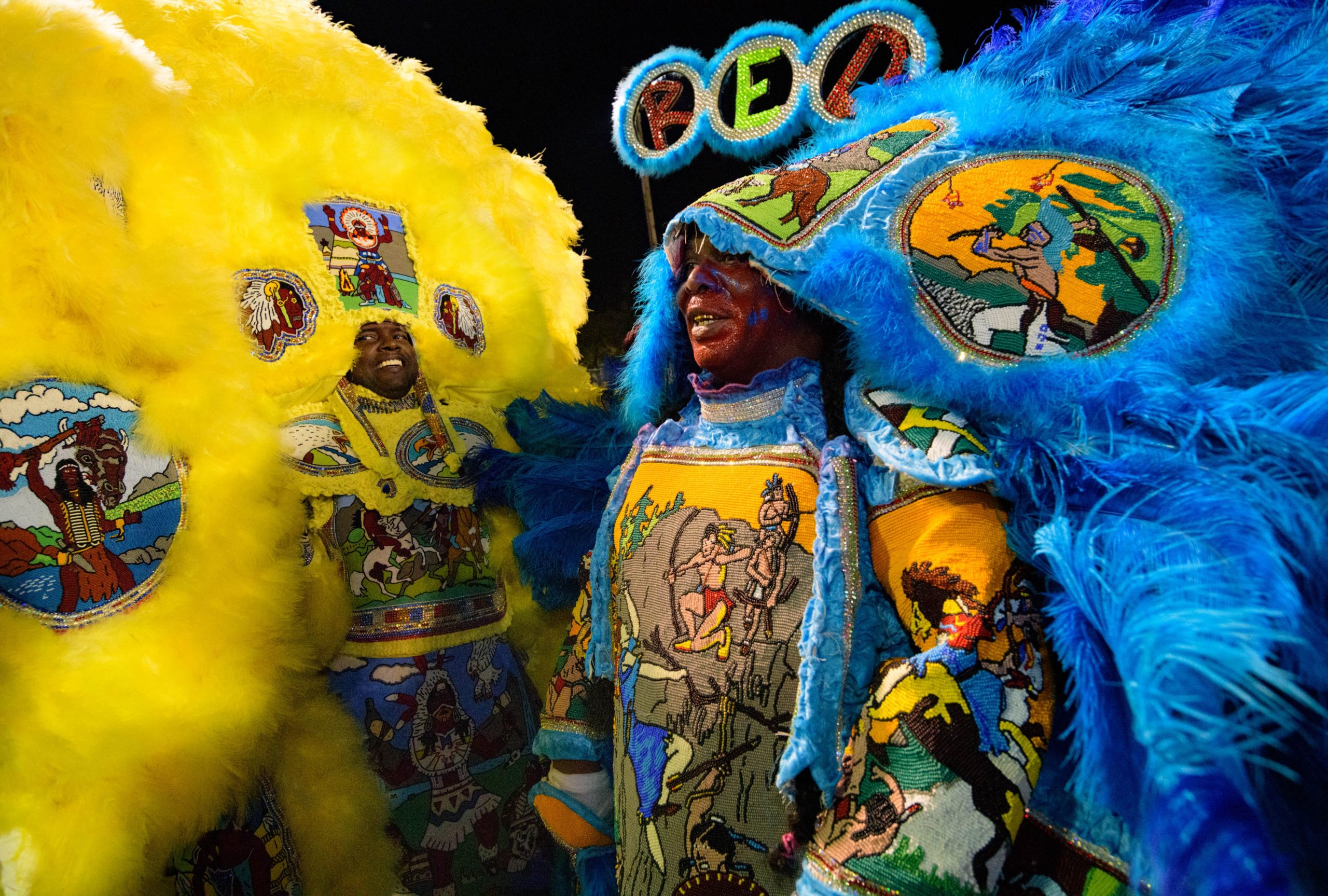Big Chief Shaka Zulu, of the Golden Feather Hunters, has a St. Joseph’s Night tradition that will come to an end this year due to COVID-19, or the coronavirus.
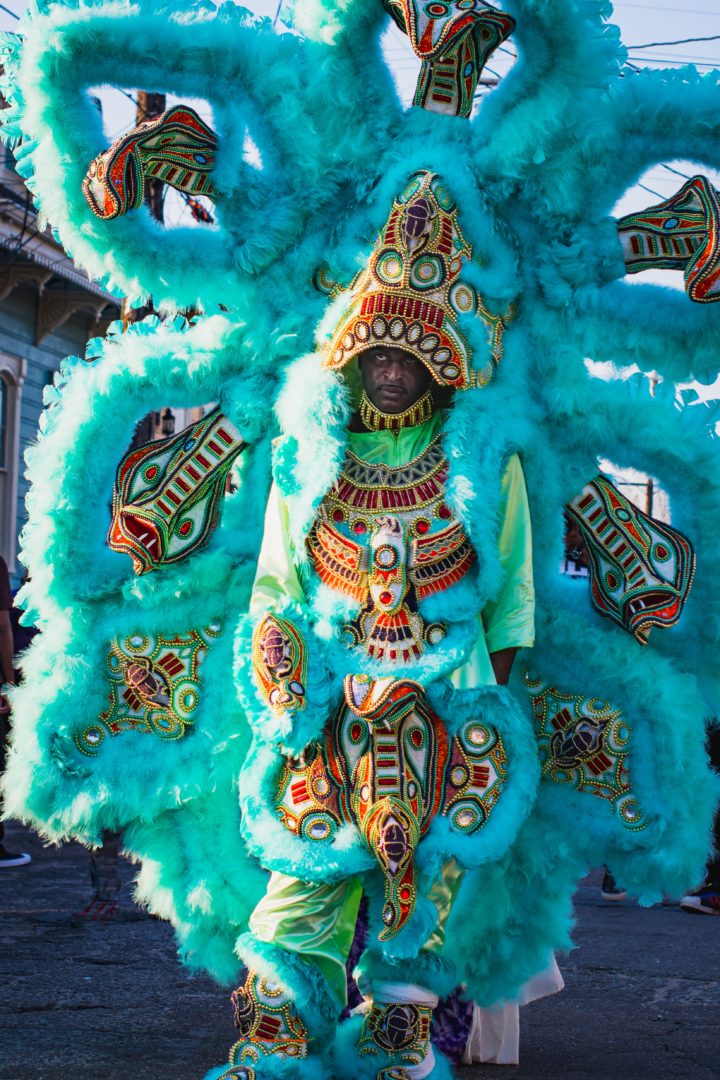
“I just got a call from my beer people,” he said. “They’re not even bringing the beer down. Every St. Joseph’s Night they do my beer launch. When they closed the bars, that was it.”
Chief Shaka is not alone. Across the city Black Masking Indians and Baby Dolls, among other “culture keepers” as Shaka calls them, are feeling the loss of St. Joseph’s Night, both culturally and economically.
For Shaka, sales of the beer go to the Leaf Feather Fund, a nonprofit that helps Black Masking Indians obtain feathers for their suits.
“We’re losing out on a bunch of feathers,” Shaka lamented.
But in the grand scheme, Shaka knows there are more important issues at stake.
“At what cost do you want to show the suits?” Shaka questioned. “If you understand culture, the culture has to live. It has to survive. Part of survival is making sound decisions to make sure everyone’s health and well-being is at stake.”
He also understands the importance of supporting City Hall.
“Just the respect that we have for her and her administration,” Shaka said, referring to Mayor LaToya Cantrell. “I think a lot of people just won’t go out. Usually, she speaks from her heart. So, if she’s saying something there is some truth and realness to it as it relates to concern.”
Culture vs Caution
“If you understand culture, the culture has to live. It has to survive. Part of survival is making sound decisions to make sure everyone’s health and well-being is at stake.”
Diane Honore, of the Black Storyville Baby Dolls, a three-time cancer survivor and a registered nurse, also understands the need for caution.
“Everyone knows where I stand — I’m definitely not going out,” Honore said. “And I don’t believe any other Baby Dolls will be out. They understand the severity of this. So I really don’t think anyone will be out there. And I’m definitely opposed to it.”
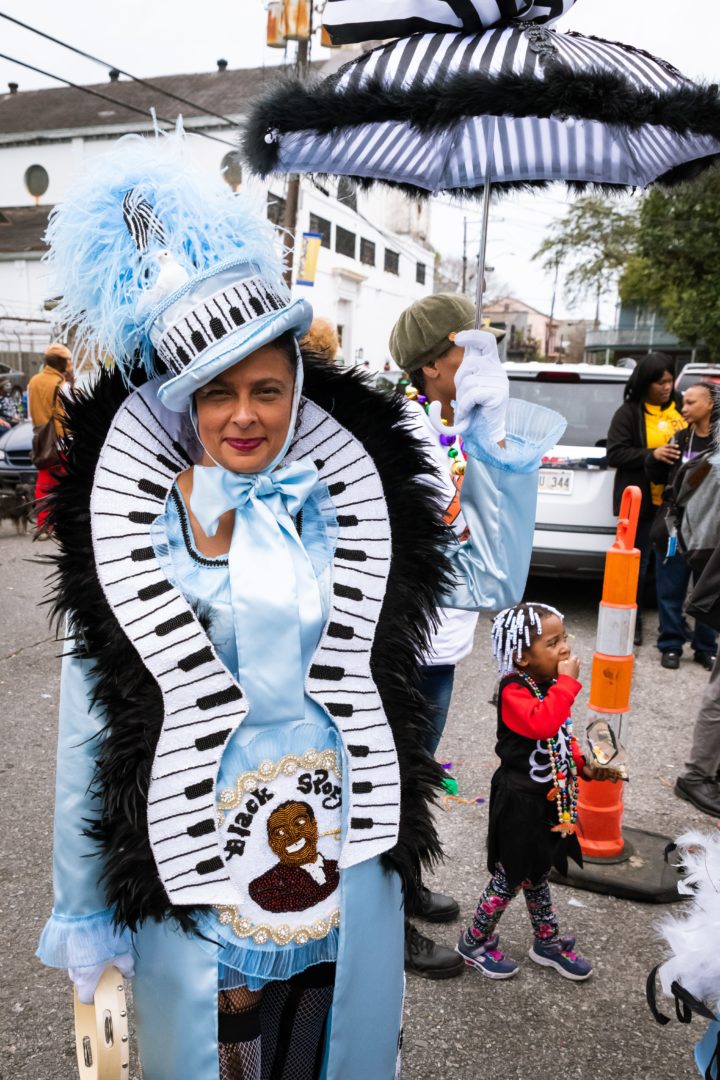
Photo: James Cullen
Still, Honore wishes that things could be different.
“It is very disappointing because it is one of the only times that we get to get out and actually do it for the community,” Honore said. “That’s why we do it. So the people in the community are not going to get to enjoy it. The older people and the kids. All of that. The whole sense of community.”
Unfortunately, the elderly and young children are among the most vulnerable to the disease, and this was not lost on any of the “culture keepers” I talked to. But there was still a sense of anger and despondency for some.
“My suit, I put so much work into it — and so much dedication and things like that — just to wear it for one day, so that was hard for me,” said Marwan Pleasant, Flag Boy of the Golden Eagles and grandson of Big Chief Monk Boudreaux. “Right now, my suit has to sit in the closet until next year.”
For Pleasant, his frustration wasn’t out of selfishness, but because he prizes the culture so much.
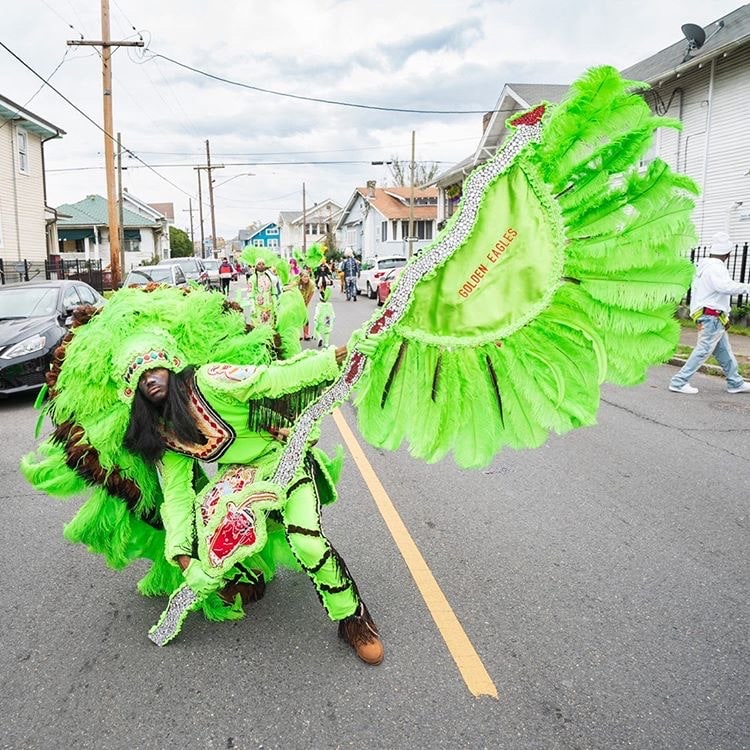
“On Mardi Gras, we weren’t able to meet as many tribes because some tribes didn’t come out at the same time we did, so St. Joseph’s Night was the night to meet everybody that didn’t come out.”
In the Black Masking Indian tradition, the tribes meet on Mardi Gras and St. Joseph’s Night, whereas Super Sunday is a parade for the community. The meeting of the tribes is sacred among the Indians, where each member of the tribe gets to fulfill their role: the Spyboy looks for feathers; the Flag Boy is the standard-bearer and sends signals to the Wild Man and the Chief; the Wild Man clears the way, and the Chief decides how and if the tribes are going to meet. This year, Mardi Gras was the lone day for this to happen.
The Economic Impact
“To just lose everything all of the sudden like that — I’m still speechless.”
But it’s not just the disruption to the culture, but the economy that has many members of the masking community worried. Baby Doll dresses and Indian suits can cost in the hundreds and thousands respectively, and that’s just in material not time.
“We spend lots of money,” Pleasant said. “For some Indians, they go through thousands. Some even have their lights turned off just to mask Mardi Gras morning.”
Furthermore, many Indians and Baby Dolls work in the service sector, which has been ravaged by closings to stem the transmission of COVID-19. Many in the culture also depend on income from the now postponed festival season and private events to get them through the long, slow summer.
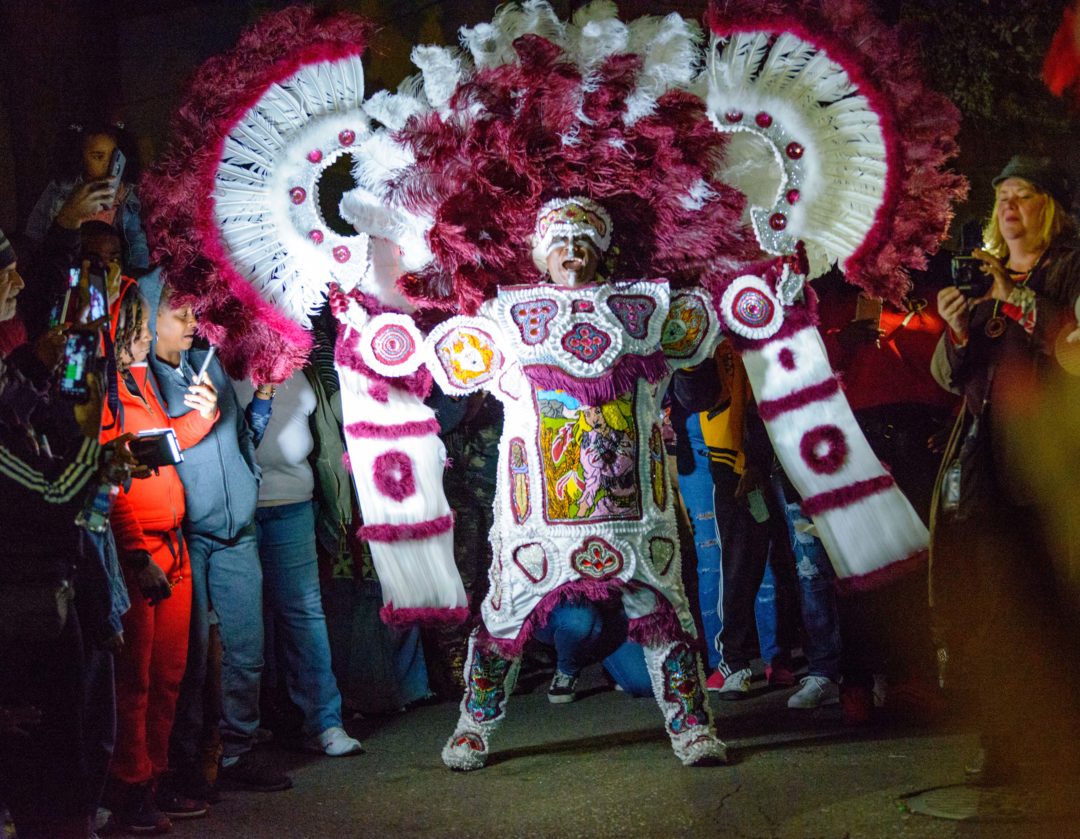
“To just lose everything all of the sudden like that — I’m still speechless — because this has all happened over the last two days,” Honore said. “It’s devastating. I don’t know how people in the culture are going to eat. People are devastated already. Because people depended on that paycheck or those tips they were gonna get, like tonight.”
Black Masking culture, however, is about perseverance. The refrain used by the Indians, “Won’t bow down; don’t know how,” is a testament to the buoyancy of the culture. A culture that originated when the escaped enslaved found asylum among the indigenous people, and who honored them by celebrating their heritage. A culture that — in the case of the Baby Dolls — originated on the streets of Storyville, where women used their agency not just to survive, but thrive. And this spirit carries on to this day. To find a way, not out, but through.
Perseverance
“You never actually finish a suit.”
Honore is already looking forward to next year and a new role in the culture.
“Next year I’m coming out as Queen of the Yellow Pocahontas,” Honore said, adding that Big Chief Darryl Montana, son of the legendary Tootie Montana, was coming out of retirement to lead the tribe. “We’ve actually started working on the suits, his and mine, for next year already. We are working for next year. That will keep us occupied.”
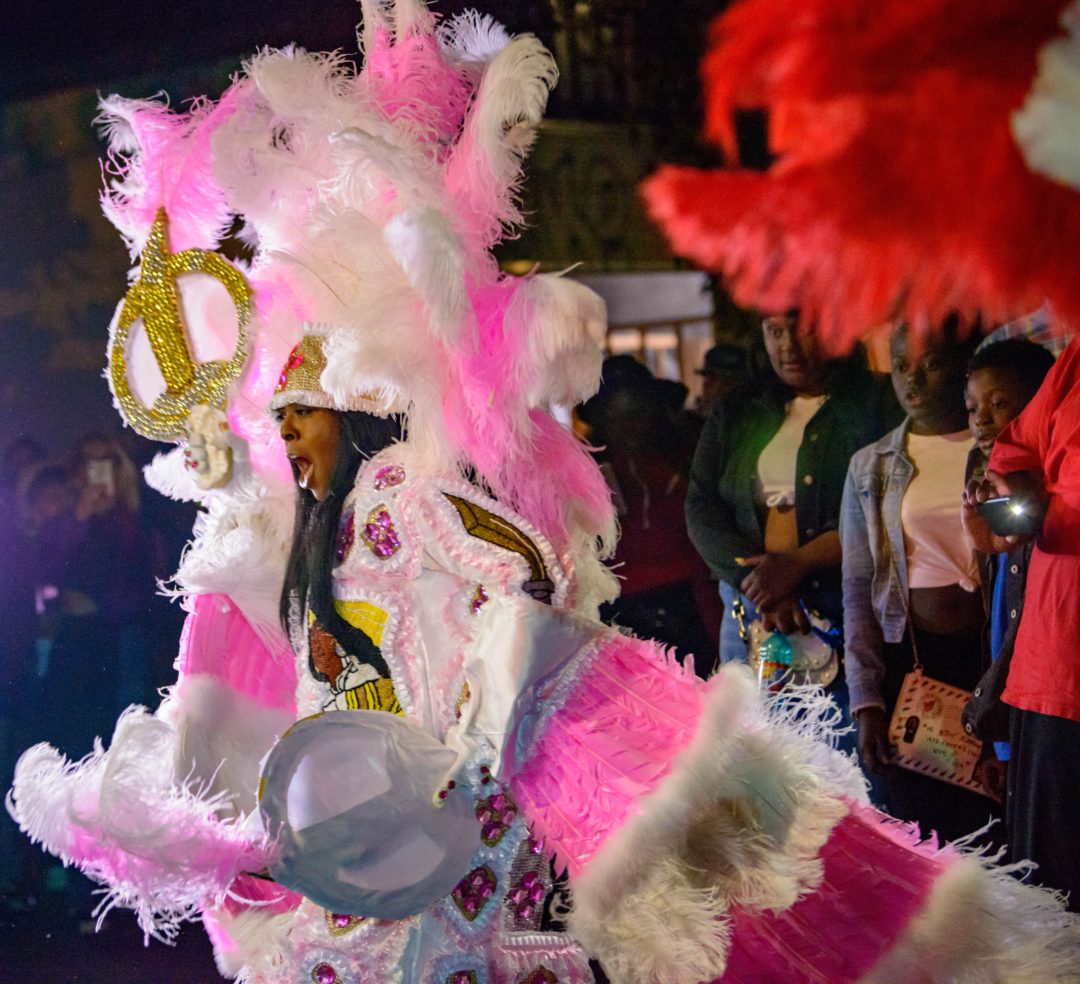
For Shaka, he is coping with a needle and thread.
“I’m still sewing actually. I just kept going,” Shaka said. “You never actually finish a suit. What you see on the streets is the imminent version of what you had in your mind. I didn’t get to finish my stick this year, so I’m kinda making my stick. And also, I’m doing it just to keep the distractions away from me. Because sewing for me is meditation as well. I just kept sewing so I could drown out a lot of the noise.”
This St. Joseph’s Night there will be no noise. No call and response or tambourines ringing. But there will be the spirit of the culture, which has defied oppression, fires, hurricanes and floodwaters, and will survive this, too.

